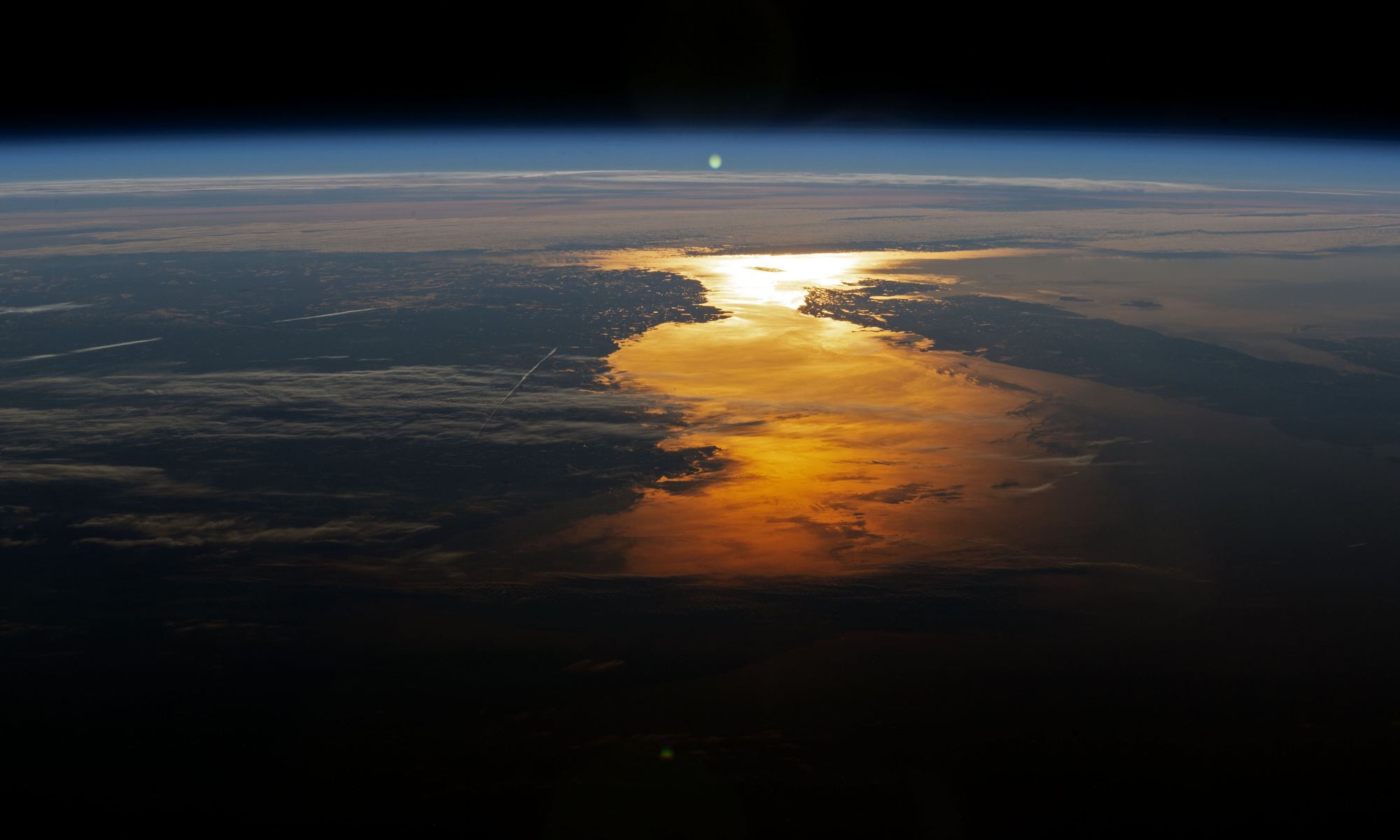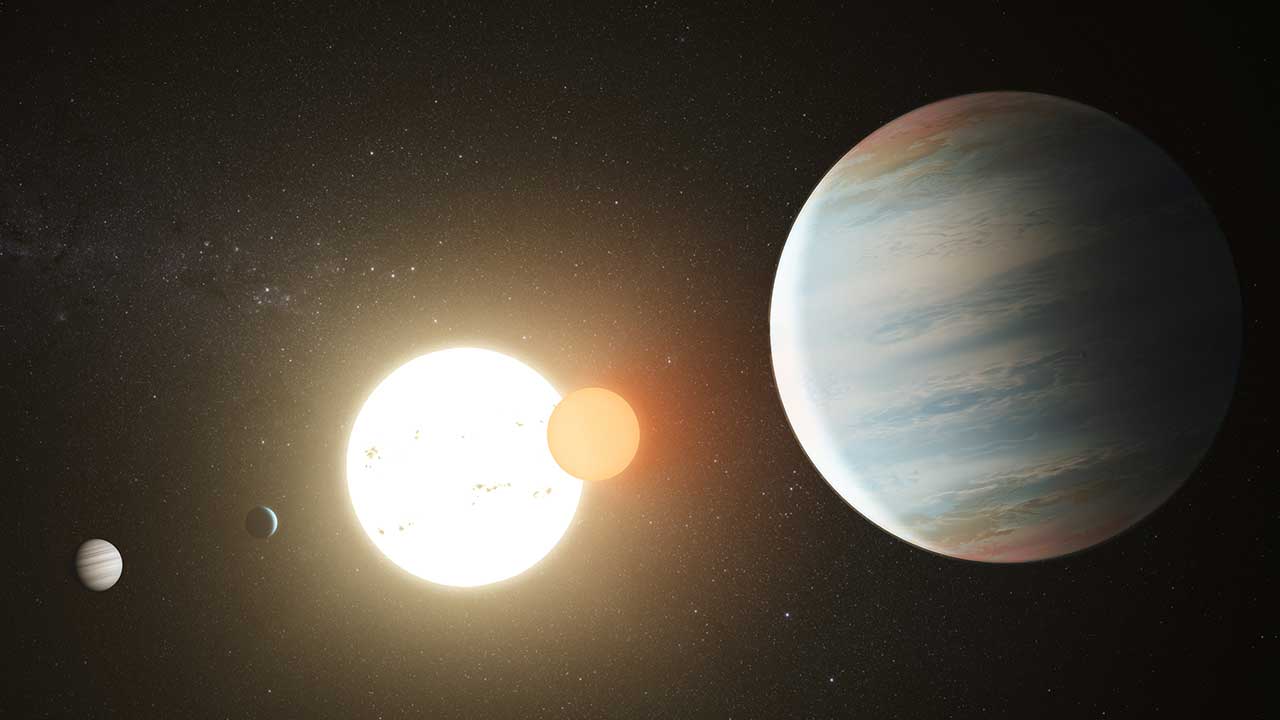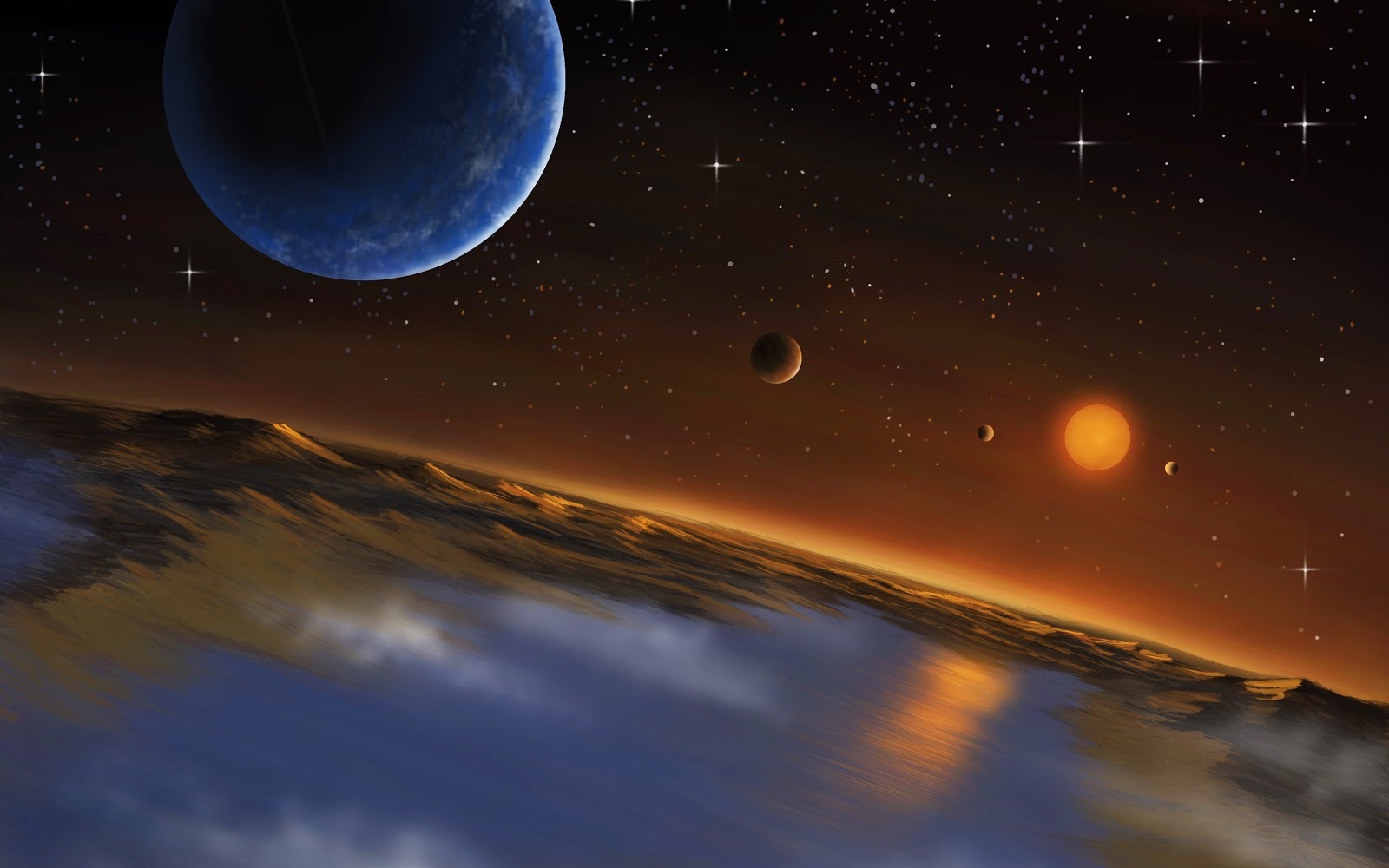Yesterday I presented a rather pessimistic view about our chances of finding evidence of alien civilizations. That work focused on detecting physical structures on an alien planet, which would take an optical telescope array the size of Saturn’s orbit. Today I’ll talk about a more optimistic view, one which focuses not on physical structures, but the fingerprint of molecules in an alien atmosphere. It’s a task that is not only much easier, it’s something we could do now using the James Webb Space Telescope (JWST).
Continue reading “If Earth Was an Exoplanet, JWST Would Know There's an Intelligent Civilization Here”Could Life Exist in the Atmosphere of a sub-Neptune Planet?
Earth is perfectly suited for organic life. It stands to reason then that similar worlds orbiting distant stars might also be rich with life. But proving it will be a challenge. One of the better ways to discover extraterrestrial life will be to study the atmospheres of inhabited exoplanets, but Earth is fairly small for a planet and has a thin atmosphere compared to larger worlds. It will be much easier to study the atmospheres of gas planets, but could such worlds harbor life? A new paper in Universe argues it could.
Continue reading “Could Life Exist in the Atmosphere of a sub-Neptune Planet?”The Moons of Rogue Planets Could Have Liquid Surface Water and Thick Atmospheres. They Could be Habitable

The search for life on exoplanets takes a fairly conservative approach. It focuses on life that is similar to that of Earth. Sure, it’s quite possible that life comes in many exotic forms, and scientists have speculated about all the strange forms life might take, but the simple fact is that Earth life is the only form we currently understand. So most research focuses on life forms that, like us, are carbon based with a biology that relies on liquid water. But even with that narrow view, life could still be hiding in places we don’t expect.
Continue reading “The Moons of Rogue Planets Could Have Liquid Surface Water and Thick Atmospheres. They Could be Habitable”Finding Oxygen on an Alien World Doesn't Always Mean There's Life There
We now know the universe is filled with planets. By one estimate, there are more than 20 billion Earth-like worlds in our galaxy alone. But how many of them are likely to have life? And how would we know if they do? Unless they happen to send us a very clear message directly, the most likely way we’ll discover exoplanet life is by looking at their atmospheres.
Continue reading “Finding Oxygen on an Alien World Doesn't Always Mean There's Life There”Beyond “Fermi’s Paradox” XII: What is the Waterworlds Hypothesis?
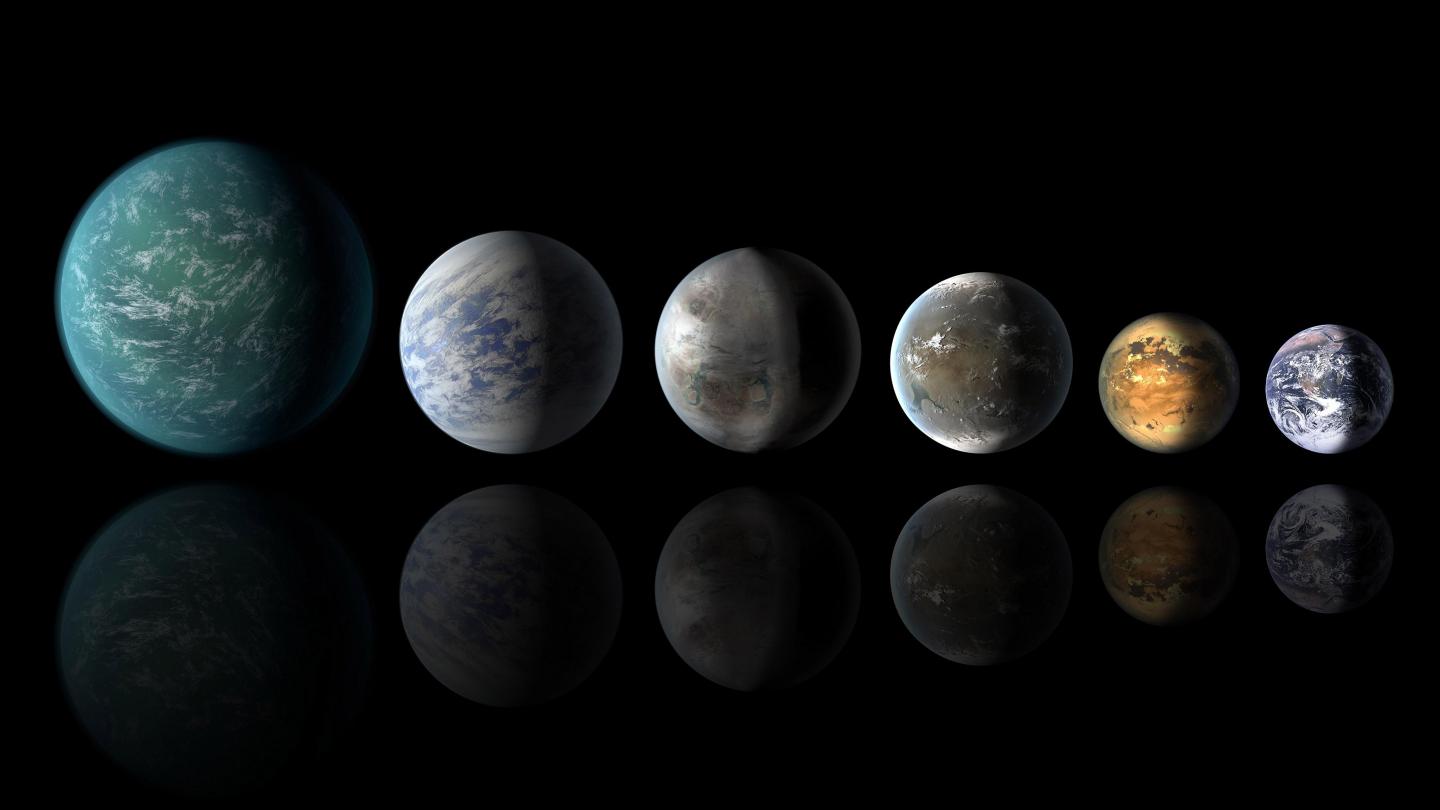
Welcome back to our Fermi Paradox series, where we take a look at possible resolutions to Enrico Fermi’s famous question, “Where Is Everybody?” Today, we examine the possibility that the reason for the Great Silence is that many planets out there are just too watery!
In 1950, Italian-American physicist Enrico Fermi sat down to lunch with some of his colleagues at the Los Alamos National Laboratory, where he had worked five years prior as part of the Manhattan Project. According to various accounts, the conversation turned to aliens and the recent spate of UFOs. Into this, Fermi issued a statement that would go down in the annals of history: “Where is everybody?“
This became the basis of the Fermi Paradox, which refers to the disparity between high probability estimates for the existence of extraterrestrial intelligence (ETI) and the apparent lack of evidence. Since Fermi’s time, there have been several proposed resolutions to his question, which includes the possibility that many exoplanets are Waterworlds, where water is so plentiful that life will be less likely to emerge and thrive.
Continue reading “Beyond “Fermi’s Paradox” XII: What is the Waterworlds Hypothesis?”Europan Space Whales Anyone? Planets Covered by Deep Oceans Can Still Have Life on Them

In recent decades, astronomers have discovered many planets that they believe are “Earth-like” in nature, meaning that they appear to be terrestrial (i.e. rocky) and orbit their stars at the right distance to support the existence of liquid water on their surfaces. Unfortunately, recent research has indicated that many of these planets may in fact be “water worlds“, where water makes up a significant proportion of the planet’s mass.
Here’s How We Can Detect Plants on Extrasolar Planets
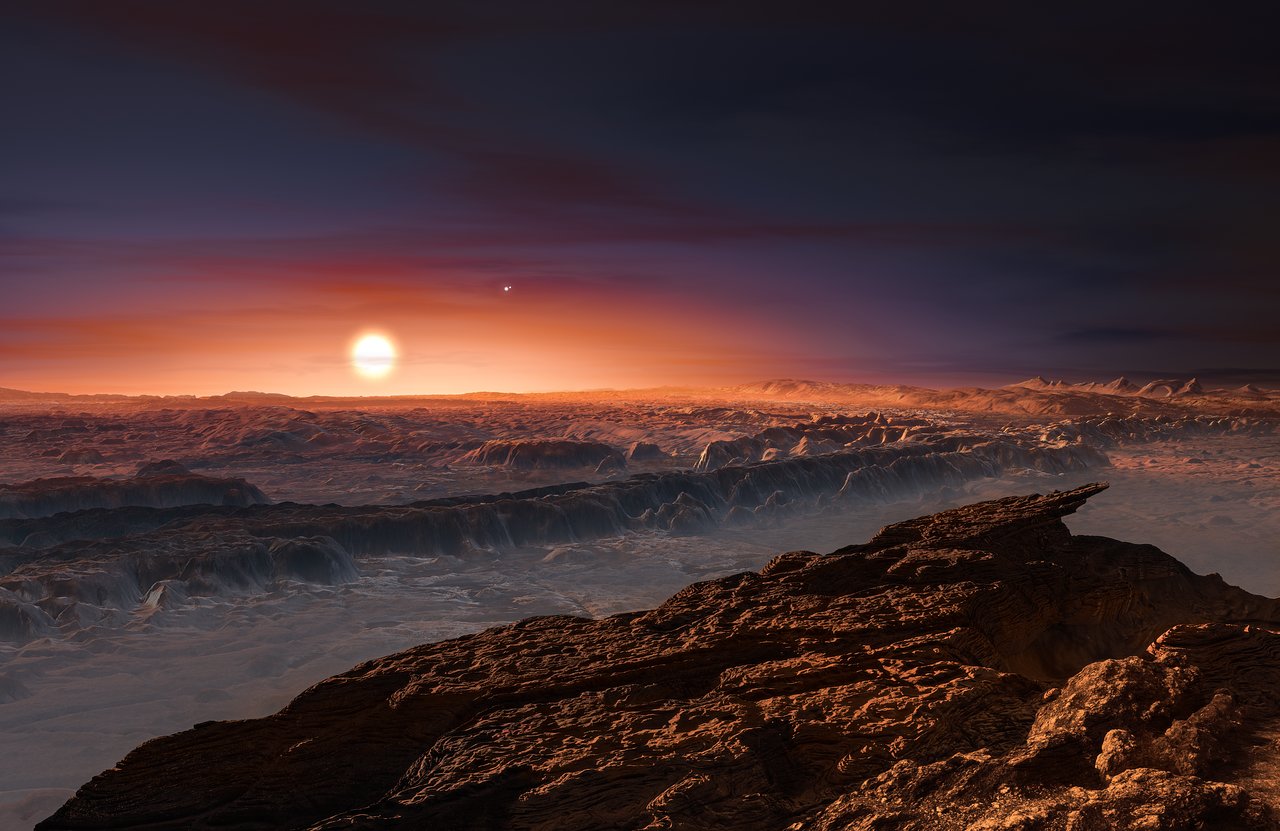
The past year has been an exciting time for those engaged in the hunt for extra-solar planets and potentially habitable worlds. In August of 2016, researchers from the European Southern Observatory (ESO) confirmed the existence of the closest exoplanet to Earth (Proxima b) yet discovered. This was followed a few months later (February of 2017) with the announcement of a seven-planet system around TRAPPIST-1.
The discovery of these and other extra-solar planets (and their potential to host life) was an overarching theme at this year’s Breakthrough Discuss conference. Taking place between April 20th and 21st, the conference was hosted by Stanford University’s Department of Physics and sponsored by the Harvard-Smithsonian Center for Astrophysics and Breakthrough Initiatives.
Continue reading “Here’s How We Can Detect Plants on Extrasolar Planets”
10 Interesting Facts About Earth

Planet Earth. That shiny blue marble that has fascinated humanity since they first began to walk across its surface. And why shouldn’t it fascinate us? In addition to being our home and the place where life as we know it originated, it remains the only planet we know of where life thrives. And over the course of the past few centuries, we have learned much about Earth, which has only deepened our fascination with it.
But how much does the average person really know about the planet Earth? You’ve lived on Planet Earth all of your life, but how much do you really know about the ground underneath your feet? You probably have lots of interesting facts rattling around in your brain, but here are 10 more interesting facts about Earth that you may, or may not know.
1. Plate Tectonics Keep the Planet Comfortable:
Earth is the only planet in the Solar System with plate tectonics. Basically, the outer crust of the Earth is broken up into regions known as tectonic plates. These are floating on top of the magma interior of the Earth and can move against one another. When two plates collide, one plate will subduct (go underneath another), and where they pull apart, they will allow fresh crust to form.

This process is very important, and for a number of reasons. Not only does it lead to tectonic resurfacing and geological activity (i.e. earthquakes, volcanic eruptions, mountain-building, and oceanic trench formation), it is also intrinsic to the carbon cycle. When microscopic plants in the ocean die, they fall to the bottom of the ocean.
Over long periods of time, the remnants of this life, rich in carbon, are carried back into the interior of the Earth and recycled. This pulls carbon out of the atmosphere, which makes sure we don’t suffer a runaway greenhouse effect, which is what happened on Venus. Without the action of plate tectonics, there would be no way to recycle this carbon, and the Earth would become an overheated, hellish place.
2. Earth is Almost a Sphere:
Many people tend to think that the Earth is a sphere. In fact, between the 6th cenury BCE and the modern era, this remained the scientific consensus. But thanks to modern astronomy and space travel, scientists have since come to understand that the Earth is actually shaped like a flattened sphere (aka. an oblate spheroid).
This shape is similar to a sphere, but where the poles are flattened and the equator bulges. In the case of the Earth, this bulge is due to our planet’s rotation. This means that the measurement from pole to pole is about 43 km less than the diameter of Earth across the equator. Even though the tallest mountain on Earth is Mount Everest, the feature that’s furthest from the center of the Earth is actually Mount Chimborazo in Ecuador.

3. Earth is Mostly Iron, Oxygen and Silicon:
If you could separate the Earth out into piles of material, you’d get 32.1 % iron, 30.1% oxygen, 15.1% silicon, and 13.9% magnesium. Of course, most of this iron is actually located at the core of the Earth. If you could actually get down and sample the core, it would be 88% iron. And if you sampled the Earth’s crust, you’d find that 47% of it is oxygen.
4. 70% of the Earth’s Surface is Covered in Water:
When astronauts first went into the space, they looked back at the Earth with human eyes for the first time. Based on their observations, the Earth acquired the nickname the “Blue Planet:. And it’s no surprise, seeing as how 70% of our planet is covered with oceans. The remaining 30% is the solid crust that is located above sea level, hence why it is called the “continental crust”.
5. The Earth’s Atmosphere Extends to a Distance of 10,000 km:
Earth’s atmosphere is thickest within the first 50 km from the surface or so, but it actually reaches out to about 10,000 km into space. It is made up of five main layers – the Troposphere, the Stratosphere, the Mesosphere, the Thermosphere, and the Exosphere. As a rule, air pressure and density decrease the higher one goes into the atmosphere and the farther one is from the surface.

The bulk of the Earth’s atmosphere is down near the Earth itself. In fact, 75% of the Earth’s atmosphere is contained within the first 11 km above the planet’s surface. However, the outermost layer (the Exosphere) is the largest, extending from the exobase – located at the top of the thermosphere at an altitude of about 700 km above sea level – to about 10,000 km (6,200 mi). The exosphere merges with the emptiness of outer space, where there is no atmosphere.
The exosphere is mainly composed of extremely low densities of hydrogen, helium and several heavier molecules – including nitrogen, oxygen and carbon dioxide. The atoms and molecules are so far apart that the exosphere no longer behaves like a gas, and the particles constantly escape into space. These free-moving particles follow ballistic trajectories and may migrate in and out of the magnetosphere or with the solar wind.
Want more planet Earth facts? We’re halfway through. Here come 5 more!
6. The Earth’s Molten Iron Core Creates a Magnetic Field:
The Earth is like a great big magnet, with poles at the top and bottom near to the actual geographic poles. The magnetic field it creates extends thousands of kilometers out from the surface of the Earth – forming a region called the “magnetosphere“. Scientists think that this magnetic field is generated by the molten outer core of the Earth, where heat creates convection motions of conducting materials to generate electric currents.

Be grateful for the magnetosphere. Without it, particles from the Sun’s solar wind would hit the Earth directly, exposing the surface of the planet to significant amounts of radiation. Instead, the magnetosphere channels the solar wind around the Earth, protecting us from harm. Scientists have also theorized that Mars’ thin atmosphere is due to it having a weak magnetosphere compared to Earth’s, which allowed solar wind to slowly strip it away.
7. Earth Doesn’t Take 24 Hours to Rotate on its Axis:
It actually takes 23 hours, 56 minutes and 4 seconds for the Earth to rotate once completely on its axis, which astronomers refer to as a Sidereal Day. Now wait a second, doesn’t that mean that a day is 4 minutes shorter than we think it is? You’d think that this time would add up, day by day, and within a few months, day would be night, and night would be day.
But remember that the Earth orbits around the Sun. Every day, the Sun moves compared to the background stars by about 1° – about the size of the Moon in the sky. And so, if you add up that little motion from the Sun that we see because the Earth is orbiting around it, as well as the rotation on its axis, you get a total of 24 hours.
This is what is known as a Solar Day, which – contrary to a Sidereal Day – is the amount of time it takes the Sun to return to the same place in the sky. Knowing the difference between the two is to know the difference between how long it takes the stars to show up in the same spot in the sky, and the it takes for the sun to rise and set once.
8. A year on Earth isn’t 365 days:
It’s actually 365.2564 days. It’s this extra .2564 days that creates the need for a Leap Year once ever four years. That’s why we tack on an extra day in February every four years – 2004, 2008, 2012, etc. The exceptions to this rule is if the year in question is divisible by 100 (1900, 2100, etc), unless it divisible by 400 (1600, 2000, etc).
9. Earth has 1 Moon and 2 Co-Orbital Satellites:
As you’re probably aware, Earth has 1 moon (aka. The Moon). Plenty is known about this body and we have written many articles about it, so we won’t go into much detail there. But did you know there are 2 additional asteroids locked into a co-orbital orbits with Earth? They’re called 3753 Cruithne and 2002 AA29, which are part of a larger population of asteroids known as Near-Earth Objects (NEOs).
The asteroid known as 3753 Cruithne measures 5 km across, and is sometimes called “Earth’s second moon”. It doesn’t actually orbit the Earth, but has a synchronized orbit with our home planet. It also has an orbit that makes it look like it’s following the Earth in orbit, but it’s actually following its own, distinct path around the Sun.
Meanwhile, 2002 AA29 is only 60 meters across and makes a horseshoe orbit around the Earth that brings it close to the planet every 95 years. In about 600 years, it will appear to circle Earth in a quasi-satellite orbit. Scientists have suggested that it might make a good target for a space exploration mission.
10. Earth is the Only Planet Known to Have Life:
We’ve discovered past evidence of water and organic molecules on Mars, and the building blocks of life on Saturn’s moon Titan. We can see amino acids in nebulae in deep space. And scientists have speculated about the possible existence of life beneath the icy crust of Jupiter’s moon Europa and Saturn’s moon Titan. But Earth is the only place life has actually been discovered.
But if there is life on other planets, scientists are building the experiments that will help find it. For instance, NASA just announced the creation of the Nexus for Exoplanet System Science (NExSS), which will spend the coming years going through the data sent back by the Kepler space telescope (and other missions that have yet to be launched) for signs of life on extra-solar planets.

Giant radio dishes are currently scan distant stars, listening for the characteristic signals of intelligent life reaching out across interstellar space. And newer space telescopes, such as NASA’s James Webb Telescope, the Transiting Exoplanet Survey Satellite (TESS), and the European Space Agency’s Darwin mission might just be powerful enough to sense the presence of life on other worlds.
But for now, Earth remains the only place we know of where there’s life. Now that is an interesting fact!
We have written many interesting articles about planet Earth here on Universe Today. Here’s What is the Highest Place on Earth?, What is the Diameter of the Earth?, What is the Closest Planet to Earth?, What is the Surface Temperature of Earth? and The Rotation of the Earth?
Other articles include how fast the Earth rotates, and here’s an article about the closest star to Earth. If you’d like more info on Earth, check out NASA’s Solar System Exploration Guide on Earth. And here’s a link to NASA’s Earth Observatory.
And there’s even an Astronomy Cast episode on the subject of planet Earth.
Is There Life On Other Planets
[/caption]
Is there life on other planets? That has been a question raised from the early beginnings of science fiction. The notion was scoffed at as pure mind play for dreamers and the occasional grifter selling rides to the Moon. At least it was until we were able to reach into space and discover new facts and gather new intel.
The possibility of life on Mars(outside sci-fi books) had been proposed as early as the 1950’s, but there was no real way to prove or disprove the theory until the launch of Mariner 4 in 1965. The spacecraft was able to return the first photographs of the planet’s surface. The news was all bad for those who had hoped for signs of life on the planet. The surface was too extreme and desolate for any type of known life form. The Voyager probes found radiolabeled carbon dioxide, but no organic molecules. Those results give mixed signals and are inconclusive at best. The results have been used to support the possibility of a microorganism named Gillevinia straata.
The Phoenix lander touched down on the Martian surface in May of 2008. The lander dug a trench on the area of the northern pole. No bacteria was found but the samples did contain bound water and carbon dioxide. The most positive evidence of life in the Martian past are meteorites from the planet. 34 exist and 3 show signs of microscopic fossilized bacteria.
Another viable possibility for life on other planets would be those similar to Gliese 581c. These planets are within the habitable zone(for human life) of their main sequence star. These planets appear to have a temperature that would allow liquid water and atmosphere’s that seem spectroscopically close to Earth’s. The information that is needed would detail the greenhouse effect on these planets. If that was available, we would be able to determine suitability for human life.
All of our efforts to answer the question ‘Is there life on other planets?’ are based on finding life that is similar to that on Earth. That is a typically arrogant line of research. Where is it written that the Earth type of life form is pervasive?
We have written many articles about the possibility of life on other planets for Universe Today. Here’s an article about the life on other planets, and here’s an article about life on Mars.
If you’d like more info on the search for life on other planets, check out the NASA Astrobiology Institute Homepage, and here’s a link to NASA Planet Quest: Finding Life.
We’ve also recorded an entire episode of Astronomy Cast all about the Future of Astronomy. Listen here, Episode 188: The Future of Astronomy.
Could there be Life on Jupiter and Saturn’s Moons?
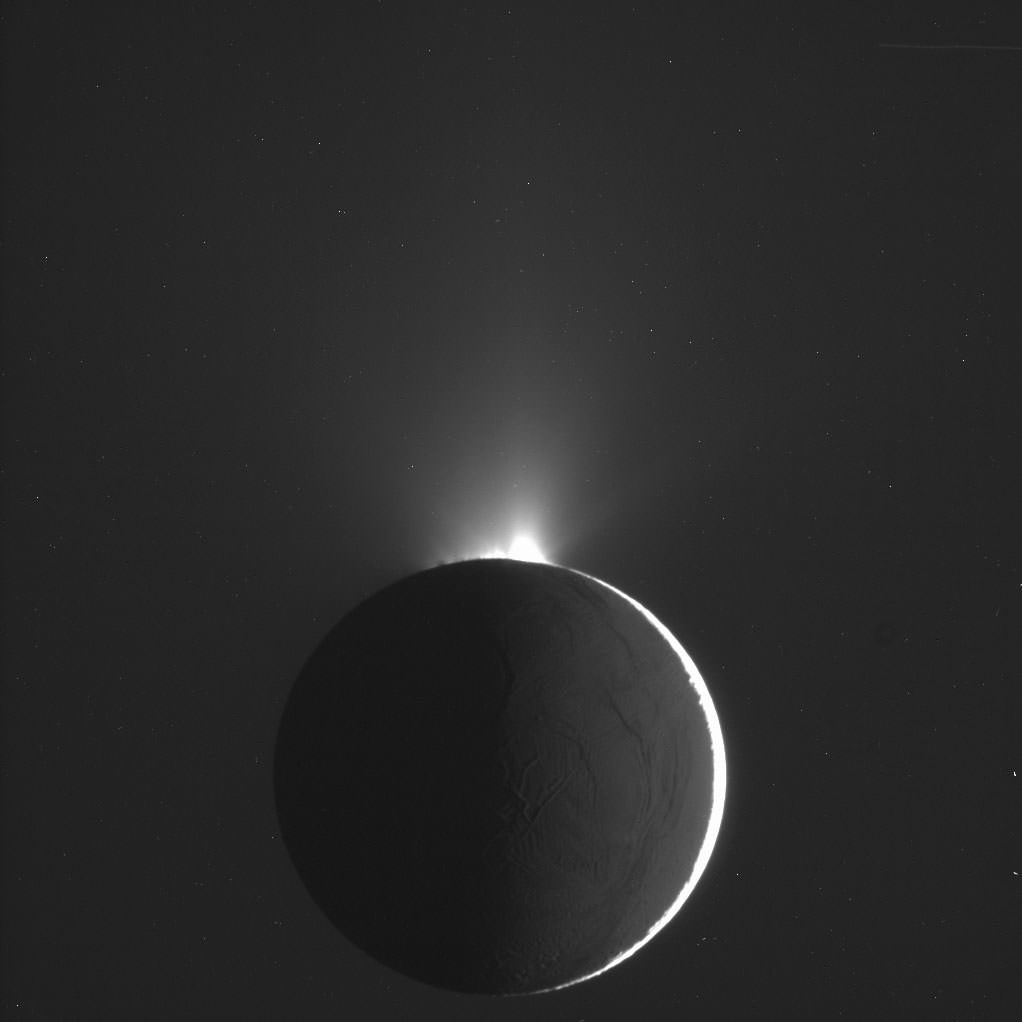
The ongoing search for the existence of life that doesn’t call the Earth ‘home’ could potentially find that life right here in our own Solar System. There is considerable debate about whether evidence for that life has already been found on Mars, but astronomers might do well to look at other, more exotic locations in our neighborhood.
At the recent meeting of the American Geophysical Union in San Fransisco, Francis Nimmo, who is a professor of Earth and planetary sciences at UC Santa Cruz, said that the conditions on Saturn’s moon Enceladus, and Jupiter’s moon Europa may be just right to harbor life.
Nimmo said, “Liquid water is the one requirement for life that everyone can agree on.” The water underneath the icy crusts of Enceladus and Europa may just be teeming with alien fish and algae, or more basic forms of life such as bacteria.
Nimmo is one of a long list of scientists speculating on the existence of life on these watery moons. A discovery of any life form originating from a planet other than the Earth “would be the scientific discovery of the millennium,” Nimmo said. And even saying that is an understatement.
If life were able to exist in the watery oceans of the moons around Saturn and Jupiter, Nimmo said, it would mean that the ‘habitable zone’ around a star would extend much further out than previously thought, to moons that orbit large gas giants in other systems around faraway stars.
The possible ocean under the surface of Enceladus may receives its heat from the tidal forces of Saturn. That is, if there is an ocean under the surface of Enceladus, as that topic is still somewhat debated among astronomers. The constant tug of Saturn’s gravitational pull may stretch the interior of the planet enough to heat the water below the crust of ice, which is estimated to vary in thickness between 25km to 45km. Geysers of frozen water forced out of crack on Enceladus’ surface have been observed by the Cassini mission, and the craft has even flown through the plume of one of these jets.
Here’s a video of Carolyn Porco, who leads the imaging team on the Cassini mission, talking about the potential for life inside the moon, and some of the discoveries made by Cassini so far:
Evidence for the ocean under Europa’s icy skin comes from the Galileo mission, which passed by the moon in 2000 and took measurements of the moon’s magnetic field. Variations in the magnetic field have led astronomers to believe there is a vast ocean of water under the surface, leading to natural suppositions about the potential of its habitability.
Europa’s ocean is heated much in the same way as that of Enceladus: both moons have an eccentric orbit around their much more massive planets, and this orbit causes a shift in the way the planet tugs on their interiors, causing friction in the cores which in turn heats them up.
The core and surface of these moons both are possible sources of chemicals that are necessary for life to form. Impacts from comets can leave molecules on the surface, and light from the Sun breaks down compounds as well. Organic molecules and minerals may originate in the cores of the moons, streaming out into the watery ‘mantle’. Such nutrients could potentially support small communities of exotic bacteria like those seen around hydrothermal vents here on Earth.
Of course, just because these moons are habitable doesn’t mean that life exists there, as Nimmo and other planetary scientists are quick to point out. Cassini may still provide evidence of life on Enceladus, as the data from this last flyby of the plumes is still being analyzed. Future missions to Europa, such as the proposed ‘interplanetary submarine‘, may also give us an answer to the question of life’s existence elsewhere, and of course the quest continues for a mission to Mars that will finally give us some idea of its habitability now or in the past.
Until the data comes back from these missions, though, we’ll still have to wait and speculate.
Source: UC Santa Cruz press release

